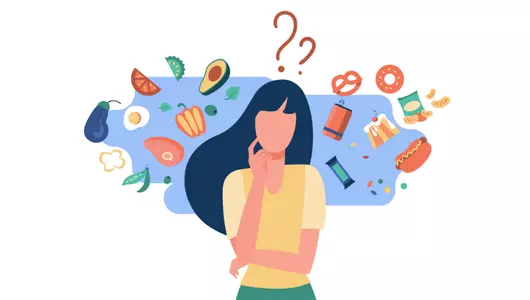
8 surprising sources of sodium
Think the salt shaker is where most of your sodium comes from? Think again…
It may be surprising to hear that only about 10-15 percent of the average American's sodium intake comes from the salt shaker. And yet, most Americans are consuming double the daily recommended 2300 mg amount. With hypertension and congestive failure on the rise, many people are trying to cut back on their sodium intake. But when they find themselves in my office to talk low-sodium diet, the most common thing I hear is "I don't add any salt to my food, so I'm already eating a low-sodium diet!" So if not the shaker, where is it all coming from?
The answer is processed foods. I'm talking about premade food, and foods that come in a package, can, box, bag, mix or kit. In an effort to make foods more affordable for the consumer, food companies often choose the cheapest and most readily-available ingredients. Sodium serves as a cheap and easy preservative, so where there is more processing there is often more sodium.
But I'm not just talking about chips and cookies. A food doesn't have to be a "junk" food to be a processed food high in sodium. Consider these surprising sources of sodium:
- Soups. That chicken noodle that tastes so good when you're sick can actually pack a sodium punch. Soups can contain 800-1000 mg or more sodium per serving, and a can of soup can often contain more than one serving – effectively doubling or tripling that number.
- Breads. Even the whole grain variety can contain between 100 and 200 mg of sodium per slice. That could put 400 mg in your sandwich before you even add any toppings!
- Condiments. Ketchup can have a whopping 150 mg per teaspoon (and when is the last time you put just one teaspoon of ketchup on, well, anything?) and soy sauce comes in at about 900 mg per tablespoon.
- Meat. Fresh beef, pork, poultry and seafood is generally very low in sodium, but lunch meats can have 400 mg or more per slice and even frozen meats are often soaked in a salt brine to retain moisture through the freezing process.
- Cheese. One ounce of cheddar cheese actually contains the same amount of sodium as one ounce of regular potato chips.
- Salad dressings. Dressings can often contain 200-300 mg of sodium or more per serving (one or two tablespoons), which is why it lasts so long in the fridge without spoiling.
- Nuts. Nuts are often thought of as the shining beacon of snack foods, but if you're buying the salted variety you're packing in a hefty amount of sodium along with that protein and healthy fat.
- Breakfast cereals. Even the bran cereals, though rich in fiber and other nutrients, can contain over 200 mg per serving.
The good news is that sodium levels actually vary a lot between brands and varieties, so excess sodium can be avoided just by reading labels and making simple swaps. Many food companies are already following this consumer trend, and there are plenty of low-sodium options available.
The other piece of good news is foods we should be eating most often, such as fresh fruits, veggies and lean meats, are naturally low in sodium. Following the guidelines of MyPlate and choosing fresh, whole foods as often as possible will help you maintain healthy levels of sodium and prevent health problems. Your heart will thank you!
Related articles

Protein takeover: How much is really needed per day?

What exercise burns the most calories?

The link between nutrition and your mental health

How much fiber does my child need?